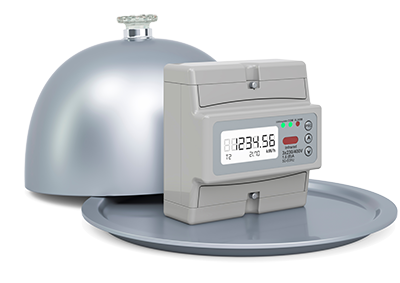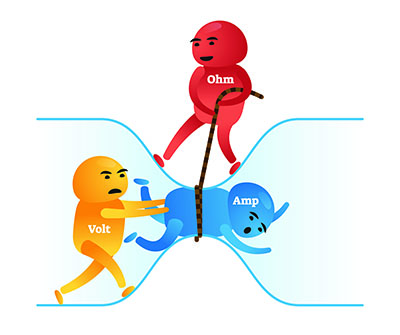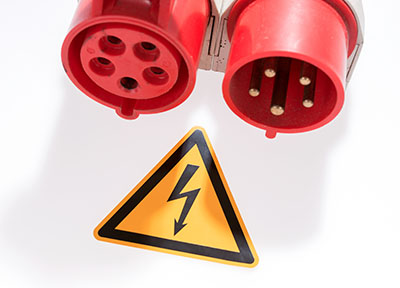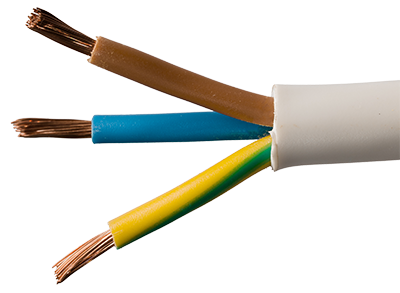AMPS, VOLTS AND WATTS
WHAT ARE THEY AND WHY DO THEY MATTER?
Trying to find the right small appliance or heavy equipment for your business can be tough enough without the added challenge of trying to figure out what all the extra bits of nonsensical information mean. Understanding what Amps (A), Volts (V) and Watts (W) are, as well as how they operate, is a step in the right direction to making the best decision. We unravel everything you need to know about these measures of energy and power in this article to help you make the best purchase when picking out your next fridge or blender.
TABLE OF CONTENTS
- What are Amps?
- When are high Amps better?
- What are Volts?
- When are high Volts better?
- What are Watts?
- When are high Watts better?
- What are Ohms?
- A simple explanation of Amps, Volts, and Watts
- Is Amps or Volts more important in appliances?
- How do they impact energy efficiency?
- Single-phase vs Three-phase power
- How Reward Hospitality can help
To give you a summary, here it is in a nutshell. Let’s imagine we’re trying to decide how many horses you’ll need to pull a carriage. Yes, we’re stepping back in time to discuss modern technology.
Amps are the number of horses you’ll need to pull the carriage. Volts is the strength each horse is capable of, and Watts is the total sum of the two. This article will also discuss Ohms (Ω), just to add a little fun into the mix, which you can correlate to the make of the carriage and the impact it has on the horses. The more complex the carriage, the harder the horses will have to work.
What are Amps?
Amps (A) are the amount of electricity or energy an appliance needs to operate.
The term ‘Amps’ is abbreviated from Amperage which is a measurement of the volume of electricity that moves past a specific point of an appliance at a time. It’s the electrical current, or the volume of electrons present.
Amperage (Amps) measures how much electricity the appliance’s motor and wires can handle to do the job.
Interesting fact. A single lightning strike measures approximately 20,000 Amps on average while a small domestic appliance measures 15 or 20 Amps. Mother Nature can withstand a lot more energy than the average toaster or kettle.
When are high Amps better?
The best way to consider whether high or low Amps are better is to think of it as the recovery process of your equipment. Remember, Amps are the amount of electricity required to operate. How often your business needs the Amps to get the job done is the question.
 If you’re a coffee shop that makes 10+ smoothies an hour, you will need a blender with higher Amps than a domestic blender purchased from your local retailer designed to make a smoothie each morning and maybe one at night.
If you’re a coffee shop that makes 10+ smoothies an hour, you will need a blender with higher Amps than a domestic blender purchased from your local retailer designed to make a smoothie each morning and maybe one at night.
 If you’re a 1000 room resort required to feed guests breakfast, lunch, and dinner throughout the day. You’re going to need higher amp kitchen equipment to provide meals compared to a B&B that feeds 10 guests breakfast and dinner only.
If you’re a 1000 room resort required to feed guests breakfast, lunch, and dinner throughout the day. You’re going to need higher amp kitchen equipment to provide meals compared to a B&B that feeds 10 guests breakfast and dinner only.
 And, returning to our horse and carriage scenario, if you’re running a horse and carriage uber operating from 8am to 8pm Monday to Friday, you’re going to need a large stable of horses compared to a Sunday trip to your neighbour’s cottage to share a weekly afternoon brunch.
And, returning to our horse and carriage scenario, if you’re running a horse and carriage uber operating from 8am to 8pm Monday to Friday, you’re going to need a large stable of horses compared to a Sunday trip to your neighbour’s cottage to share a weekly afternoon brunch.
RETURN TO TOP
What are Volts?
Volts (V) are the measure of the force of the electricity or energy the appliance needs to get the job done.
The term ‘Volts’ is abbreviated from Voltage which is the measurement of speed the electricity moves past a specific point of an appliance at a time. It’s the force required to push the Amps.
Interesting fact. A single lightning strike contains approximately 300,000,000 Volts on average while a small domestic appliance contains 120 Volts. Mother Nature can push more energy from one distance to another than the average toaster or kettle.
When are high Volts better?
The best way to consider whether high or low Volts are better is to think of it as the amount of energy your equipment needs to exert at any one time. Remember, Volts are the amount of force required to get the job done.
 If you’re an aged care facility required to feed 100 residents a pureed vegetable medley for lunch, you’re going to need a food blender with higher Volts than the blender required of a coffee shop blending 10+ smoothies from liquid ingredients per hour.
If you’re an aged care facility required to feed 100 residents a pureed vegetable medley for lunch, you’re going to need a food blender with higher Volts than the blender required of a coffee shop blending 10+ smoothies from liquid ingredients per hour.
 If you’re a restaurant serving pureed potato to 100 guests booked in for a function at the same time, you’re going to need higher voltage kitchen equipment than a restaurant feeding 10 guests for dinner. This is due to the requirement for more exertion required in the first case scenario.
If you’re a restaurant serving pureed potato to 100 guests booked in for a function at the same time, you’re going to need higher voltage kitchen equipment than a restaurant feeding 10 guests for dinner. This is due to the requirement for more exertion required in the first case scenario.
 And, returning to our horse and carriage scenario, if you’re running a carriage race where you are allowed 2 horses. The two horses you pick for the race to secure you the win is going to be significantly different to the two horses you choose to visit your neighbour’s cottage on Sunday for brunch.
And, returning to our horse and carriage scenario, if you’re running a carriage race where you are allowed 2 horses. The two horses you pick for the race to secure you the win is going to be significantly different to the two horses you choose to visit your neighbour’s cottage on Sunday for brunch.
What is the difference between Volts and Amps?
Amps and Volts have their distinct functions within an electrical circuit. They complement each other in their independent roles. An Amperage measures electricity while Voltage represents the potential of the Amps flowing through the closed circuit. In short, Amps represent the volume of electricity and Volts carry the electricity through the circuit.
The Amps are the number of horses you require. The Volts is how strong you need the horses to work to get the job done.

RETURN TO TOP
What are Watts?
Watts (W) are the total workload of the appliance.
The term ‘Watts’ is abbreviated from Wattage and is the measurement of Amps and Watts.
Volts X Amps = Wattage. But don’t let that equation fool you. 20 Amps at 10 Volts produce the same Wattage as 10 Amps at 20 Volts. The Watts are the same but each scenario packs a different punch.
When are high Watts better?
In every case and scenario, a high watt appliance will produce what you want. However, a high watt appliance will use up more electricity due to the Amps x Volts = Watts equation. So, the higher the Wattage, the higher your electricity bill and maintenance investment. In saying that, it’s necessary to point out that the electricity fee verse equipment replacement cost needs to be taken into consideration.
 If you’re a café that makes 10 smoothies for your breakfast clients between 6am and 8am each morning, you will need a blender with a higher Wattage than a domestic blender purchased from your local retailer. This is because the Amps vs Wattage ratios will not be suited to your need in comparison to a mother making herself a liquid breakfast each morning before she gets the kids up for school.
If you’re a café that makes 10 smoothies for your breakfast clients between 6am and 8am each morning, you will need a blender with a higher Wattage than a domestic blender purchased from your local retailer. This is because the Amps vs Wattage ratios will not be suited to your need in comparison to a mother making herself a liquid breakfast each morning before she gets the kids up for school.
 If you’re a 1000 room resort cooking meals in your combi oven for breakfast, lunch, and dinner. You’re going to need more Watts than an aged care facility cooking breakfast, lunch, and dinner for 50 residents every day. In both scenarios, the ovens are used at the same time each day however the 1000 room resort will require more exertion and work to retain heat while facilitating 1000 meals.
If you’re a 1000 room resort cooking meals in your combi oven for breakfast, lunch, and dinner. You’re going to need more Watts than an aged care facility cooking breakfast, lunch, and dinner for 50 residents every day. In both scenarios, the ovens are used at the same time each day however the 1000 room resort will require more exertion and work to retain heat while facilitating 1000 meals.
 And, returning to our horse and carriage scenario. Consider Watts to be $100,000 for you to invest into the horses to pull your carriage. You invest in four horses (Amps) of average strength we’ll measure at two (Volts,) to get to your neighbour’s place for Sunday lunch. Now let’s compare that to two horses (Amps) of higher strength we’ll measure at four (Volts), to get you to your neighbour’s place for Sunday lunch faster. There’s no denying the second scenario will wear down faster than the first – however, both achieve the same result.
And, returning to our horse and carriage scenario. Consider Watts to be $100,000 for you to invest into the horses to pull your carriage. You invest in four horses (Amps) of average strength we’ll measure at two (Volts,) to get to your neighbour’s place for Sunday lunch. Now let’s compare that to two horses (Amps) of higher strength we’ll measure at four (Volts), to get you to your neighbour’s place for Sunday lunch faster. There’s no denying the second scenario will wear down faster than the first – however, both achieve the same result.
What are Ohms?
Ohm (Ω) is electrical resistance. Within an electrical appliance, resistance is present from any material or object that impedes the electrical flow. For instance, a smaller motor represents fewer Ohms than a larger one.
Consider Ohms to be the weight of the carriage the horses need to pull in the analogy we’ve presented so far. The higher the ohm, the more you need to consider if it’s Amps or Volts you require to get the job done.

A simple way to understand Amps, Volts, and Watts
A very common analogy used to understand these electrical terms, aside from our horse and carriage analogy, is a plumbing system like a pressurised tank connected to a hose that is used to water the garden.
Amps = the water
Volts = the water pressure
Watt = the flow rate
Ohm = the size of the hose
In a situation where you’re watering the garden, you may want more water (Wattage) so you increase the pressure (Volts) on the tank to get more water (Amps). You decide there isn’t enough water to get the job done. You can continue increasing the water pressure (Volts) or you can increase the size of the hose (reducing the resistance or Ohms) to get the job done (Watts).
RETURN TO TOP
Is Amps or Volts more important in electrical appliances?
It can be difficult to decipher if higher Amps or Volts are better when purchasing an electrical appliance in most instances. It may seem like higher Amps (more electricity) is better but this is not necessarily the case. Sometimes, Volts are the preference to getting the job done (refer to our scenarios in our discussion about Volts).

How do Amps, Volts and Watts impact energy efficiency?
An electricity bill is a fee for the number of kiloWatts (1 kilowatt = 1,000 Watts) your business consumes. The more Amps and Volts your appliances require to operate (the Watts), the higher your electricity usage will be. When your appliance is turned off, it may still be drawing an amount of power (Watts) to keep it in standby mode or to keep small operator lights turned on. This will add to your electricity usage and something to consider when comparing appliances via watt use.
Single-phase vs Three-phase Power
 Single-phase (Ph) power, known as residential voltage because it’s used in most homes, uses a phase and a neutral wire. The phase wire carries the low voltage current while the neutral wire provides a path for the current to return. The power output of a single-phase supply is not constant, it rises and falls.
Single-phase (Ph) power, known as residential voltage because it’s used in most homes, uses a phase and a neutral wire. The phase wire carries the low voltage current while the neutral wire provides a path for the current to return. The power output of a single-phase supply is not constant, it rises and falls.
Three-phase power provides three alternating currents via four wires – one neutral wire and three conductor wires. Each stretch of the alternating current reaches maximum voltage and remains constant.
What does this mean?
Commercial and industrial-grade equipment requires a three-phase power supply due to the larger electronic input required. A single-phase power supply is sufficient for up to 230 Volts however and a three-phase power supply is capable of up to 415 Volts. This means while single-phase power is suitable for home appliances, a large kitchen operating large equipment simultaneously such as fridges, freezers, and ovens requires a three-phase power supply to distribute electrical loads appropriately.
RETURN TO TOP
Reward Hospitality can help you select the right equipment to get the job done based on Amps, Volts, and Watts.
Finding the right appliance and equipment for your needs can be challenging. There are so many considerations (like Amps, Volts, and Watts) when finding the right one. Reward Hospitality has a team of equipment experts on standby to help you make the right decision.
You can contact us online via a submission form, engage with us in an online chat, or give us a call. We’d love nothing more than to help you! We can discuss your needs virtually or arrange for an expert to meet with you in person for a one-on-one if that’s your preference. Our goal is to help you make the right choice so your business soars.
If you need a bit of inspiration about the products you may need, we have a comprehensive catalogue you’re encouraged to browse. Since you made it to this end of our article, we recommend you look through our benchtop equipment and heavy equipment products so you can shortlist what you need. Then contact us and we’ll help you navigate through deciding on the best equipment for your business.